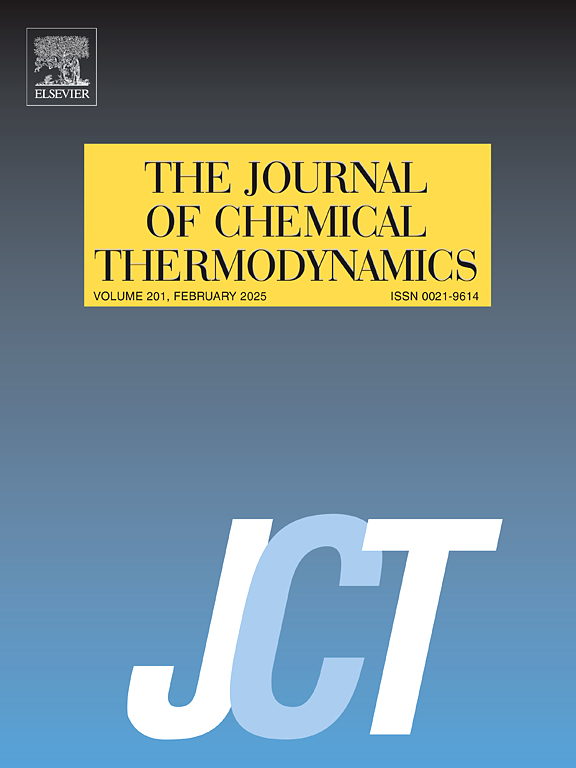Impact of viscosity index modifiers with different architectures and functionalities on the thermophysical properties and viscosity of a mineral base oil
IF 2.2
3区 工程技术
Q3 CHEMISTRY, PHYSICAL
引用次数: 0
Abstract
This study examines the influence of viscosity index modifiers on the high-pressure and temperature thermophysical and rheological properties of a mineral base oil, Ultra S4. The viscosity index modifiers tested included polymethacrylates, ethylene-propylene block copolymers and star-styrene butadiene copolymers. Densities were determined at pressures in the range of 10–35 MPa and at 298, 323, 348, 373, and 398 K using a high-pressure variable-volume view-cell. The density data were then correlated with the Sanchez-Lacombe Equation of State from which the thermodynamic properties of isothermal compressibility, isobaric expansivity and internal pressure were derived. Viscosities were determined at pressures in the range of 10–45 MPa and at 298, 323, 348 and 373 K using a uniquely designed high-pressure rotational viscometer. High pressure density and viscosity results were correlated with free volume and density-scaling equations to provide further insight into molecular packing and interactions. Additionally, intrinsic viscosity measurements were performed to evaluate the semi-dilute regime and the radius of gyration at 30 °C and 50 °C.
不同结构和功能的粘度指数改进剂对矿物基础油热物性和粘度的影响
本研究考察了粘度指数调节剂对矿物基础油Ultra S4高压和高温热物理和流变性能的影响。测试的粘度指数改性剂包括聚甲基丙烯酸酯、乙烯-丙烯嵌段共聚物和星型苯乙烯-丁二烯共聚物。在10-35 MPa和298、323、348、373和398 K的压力范围内,使用高压变体积观察池测定密度。然后将密度数据与Sanchez-Lacombe状态方程相关联,由此导出等温压缩率、等压膨胀率和内压的热力学性质。在10-45 MPa和298、323、348和373 K的压力范围内,使用独特设计的高压旋转粘度计测量粘度。高压密度和粘度结果与自由体积和密度缩放方程相关联,从而进一步了解分子堆积和相互作用。此外,还进行了特性粘度测量,以评估半稀释状态和30 °C和50 °C时的旋转半径。
本文章由计算机程序翻译,如有差异,请以英文原文为准。
求助全文
约1分钟内获得全文
求助全文
来源期刊

Journal of Chemical Thermodynamics
工程技术-热力学
CiteScore
5.60
自引率
15.40%
发文量
199
审稿时长
79 days
期刊介绍:
The Journal of Chemical Thermodynamics exists primarily for dissemination of significant new knowledge in experimental equilibrium thermodynamics and transport properties of chemical systems. The defining attributes of The Journal are the quality and relevance of the papers published.
The Journal publishes work relating to gases, liquids, solids, polymers, mixtures, solutions and interfaces. Studies on systems with variability, such as biological or bio-based materials, gas hydrates, among others, will also be considered provided these are well characterized and reproducible where possible. Experimental methods should be described in sufficient detail to allow critical assessment of the accuracy claimed.
Authors are encouraged to provide physical or chemical interpretations of the results. Articles can contain modelling sections providing representations of data or molecular insights into the properties or transformations studied. Theoretical papers on chemical thermodynamics using molecular theory or modelling are also considered.
The Journal welcomes review articles in the field of chemical thermodynamics but prospective authors should first consult one of the Editors concerning the suitability of the proposed review.
Contributions of a routine nature or reporting on uncharacterised materials are not accepted.
 求助内容:
求助内容: 应助结果提醒方式:
应助结果提醒方式:


